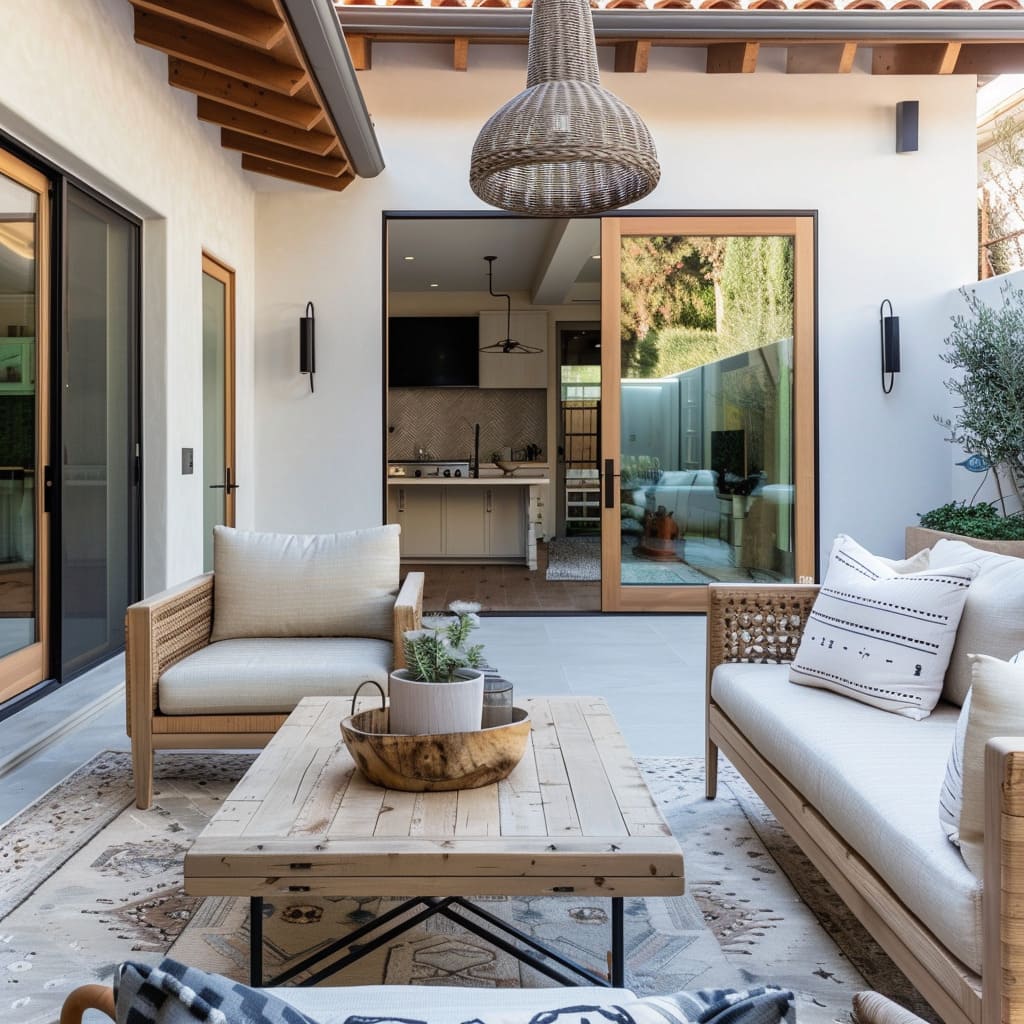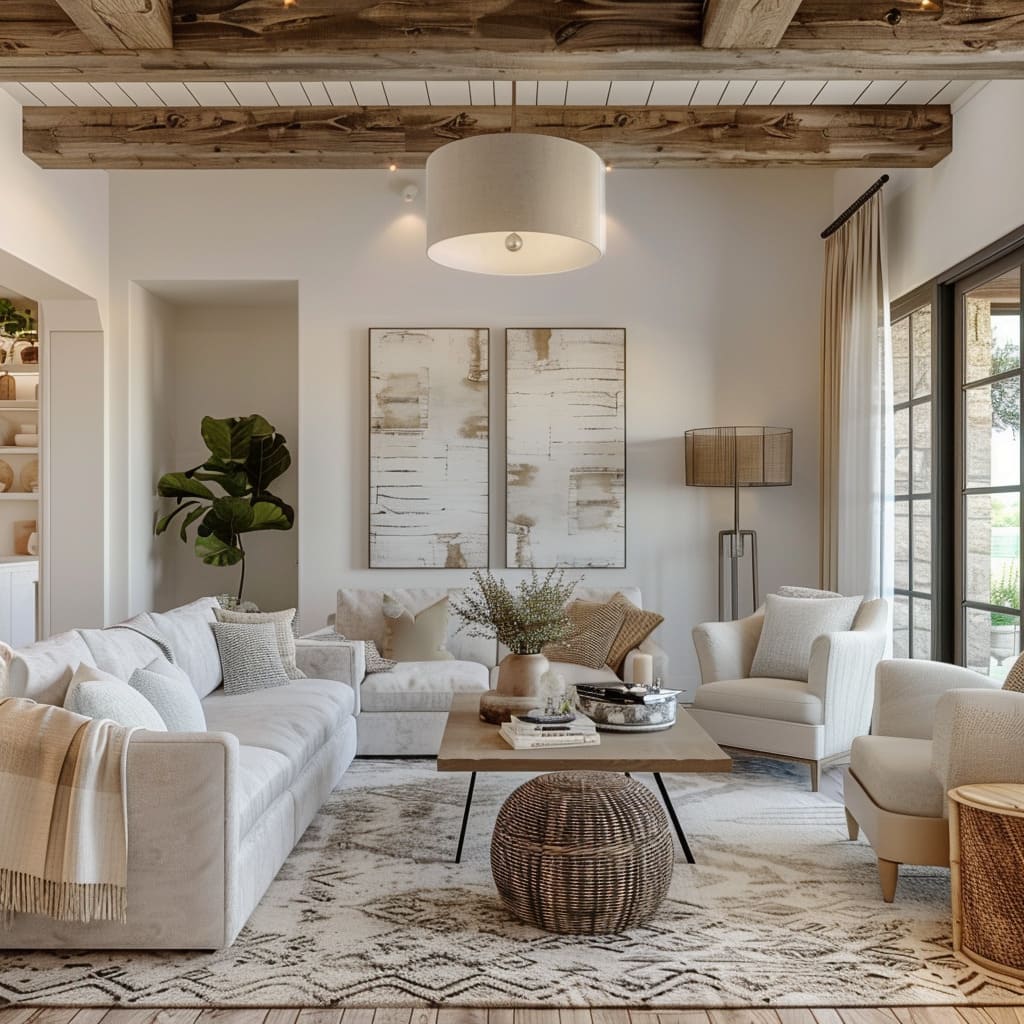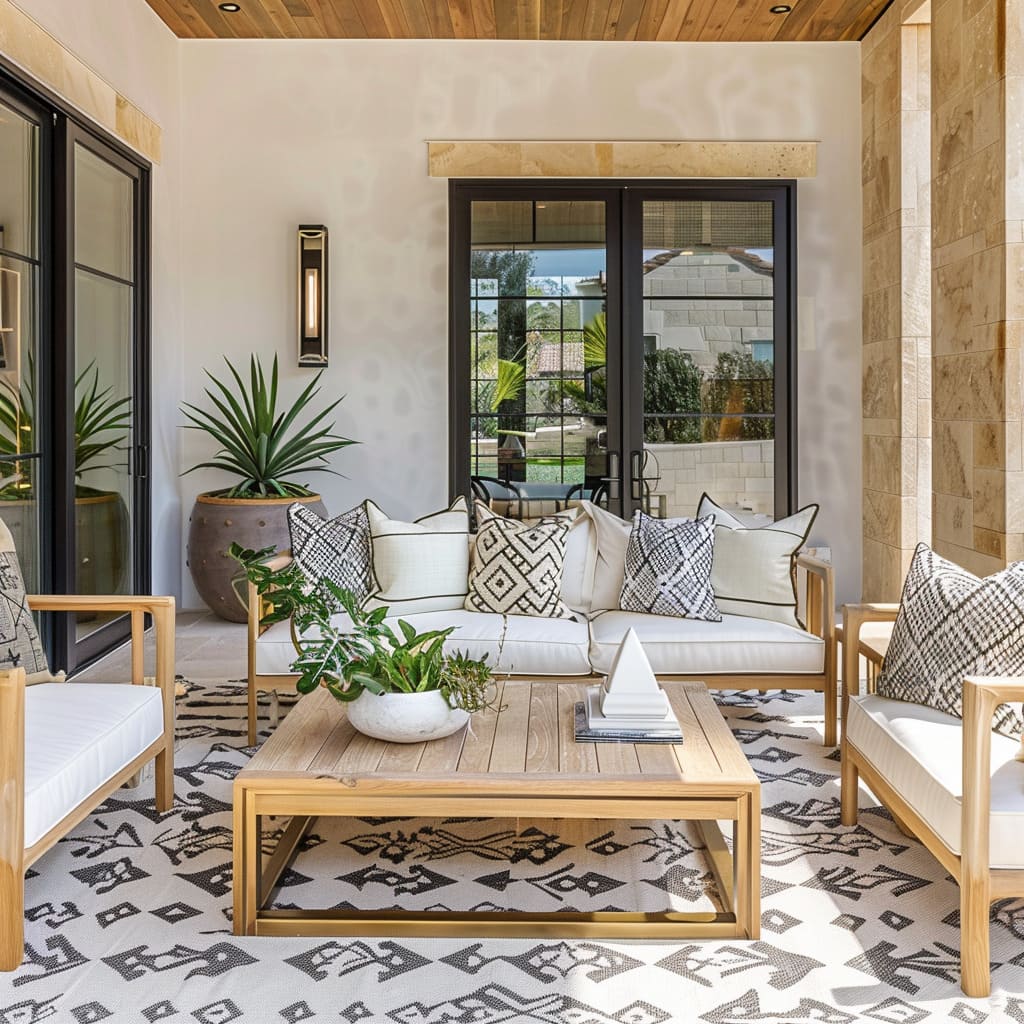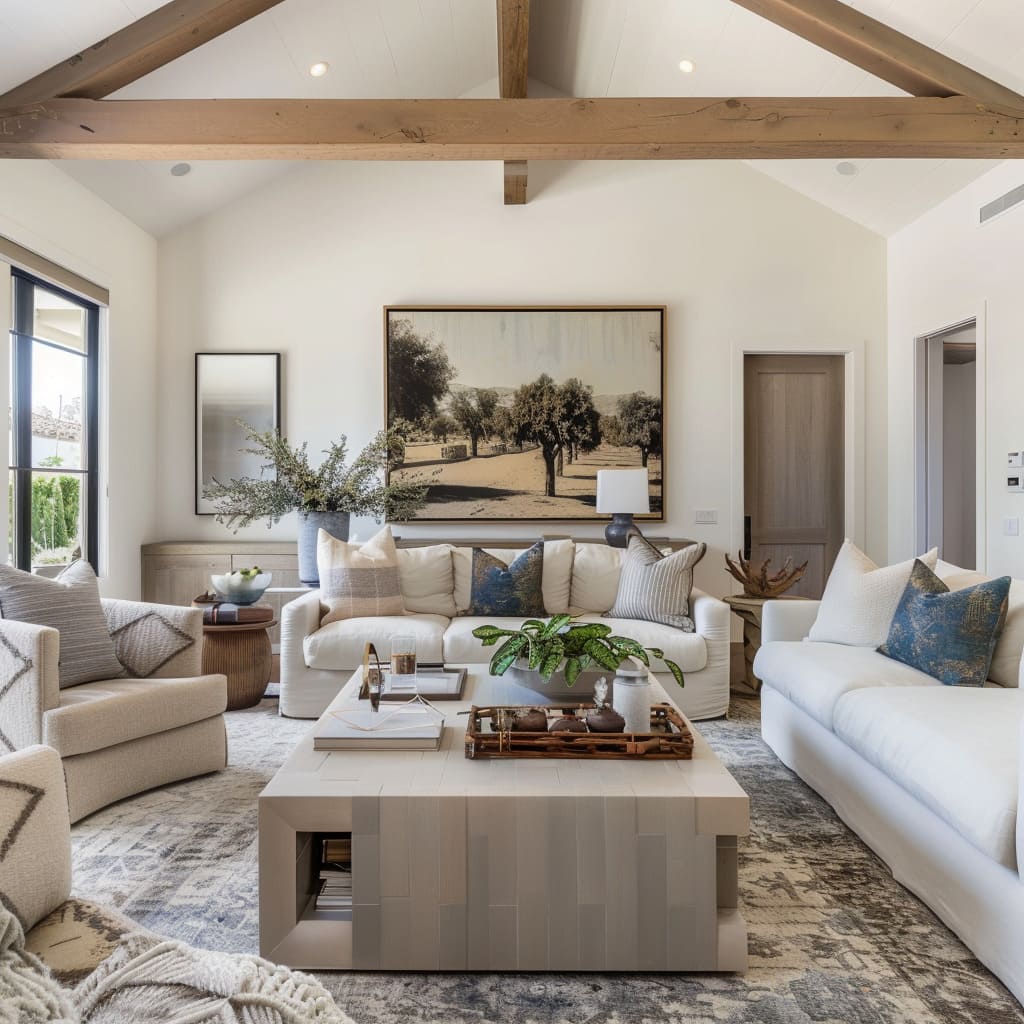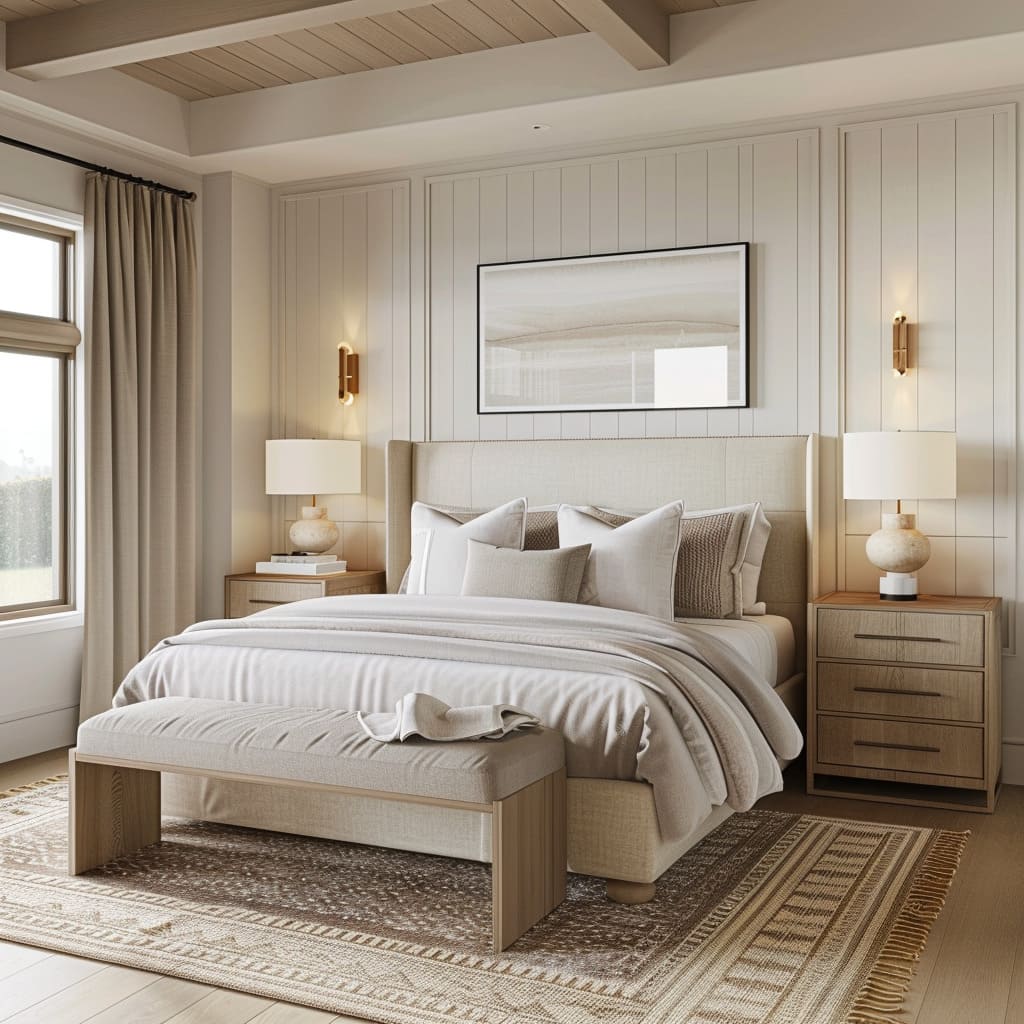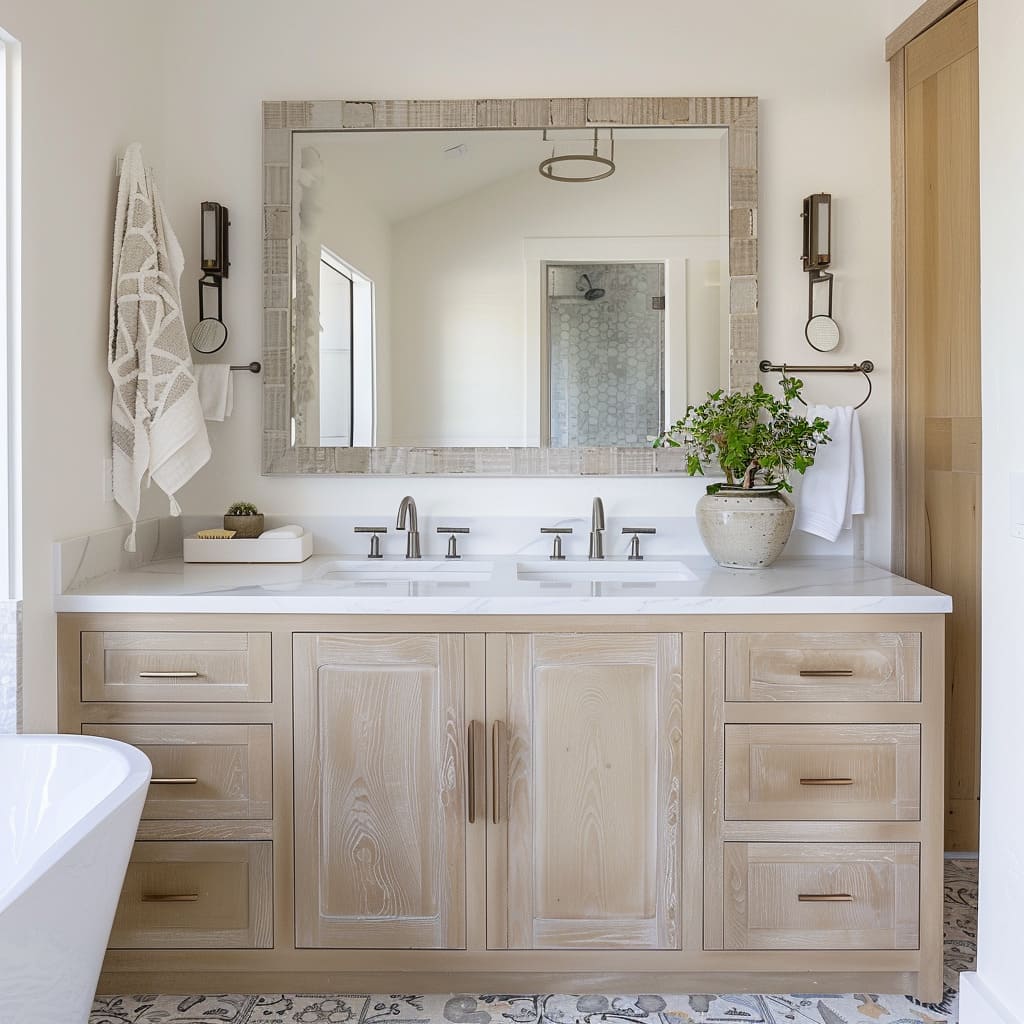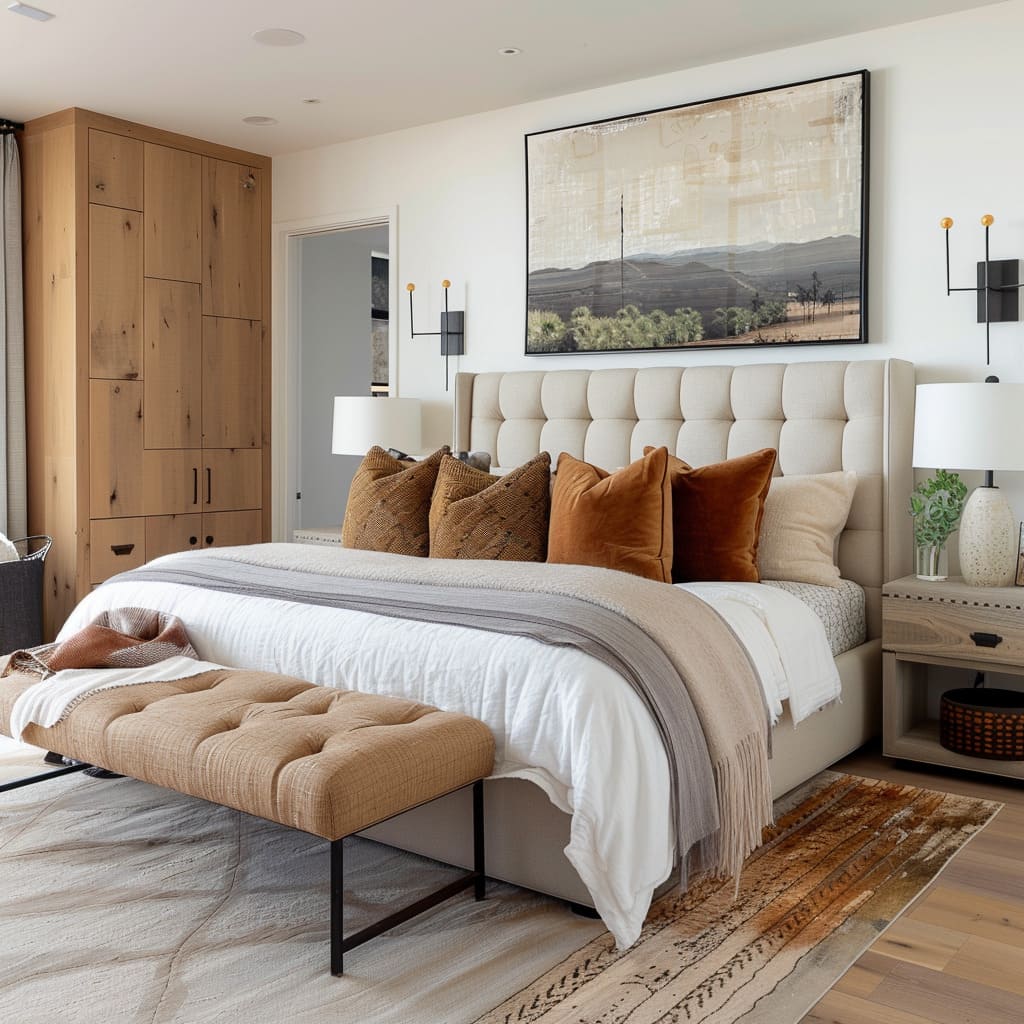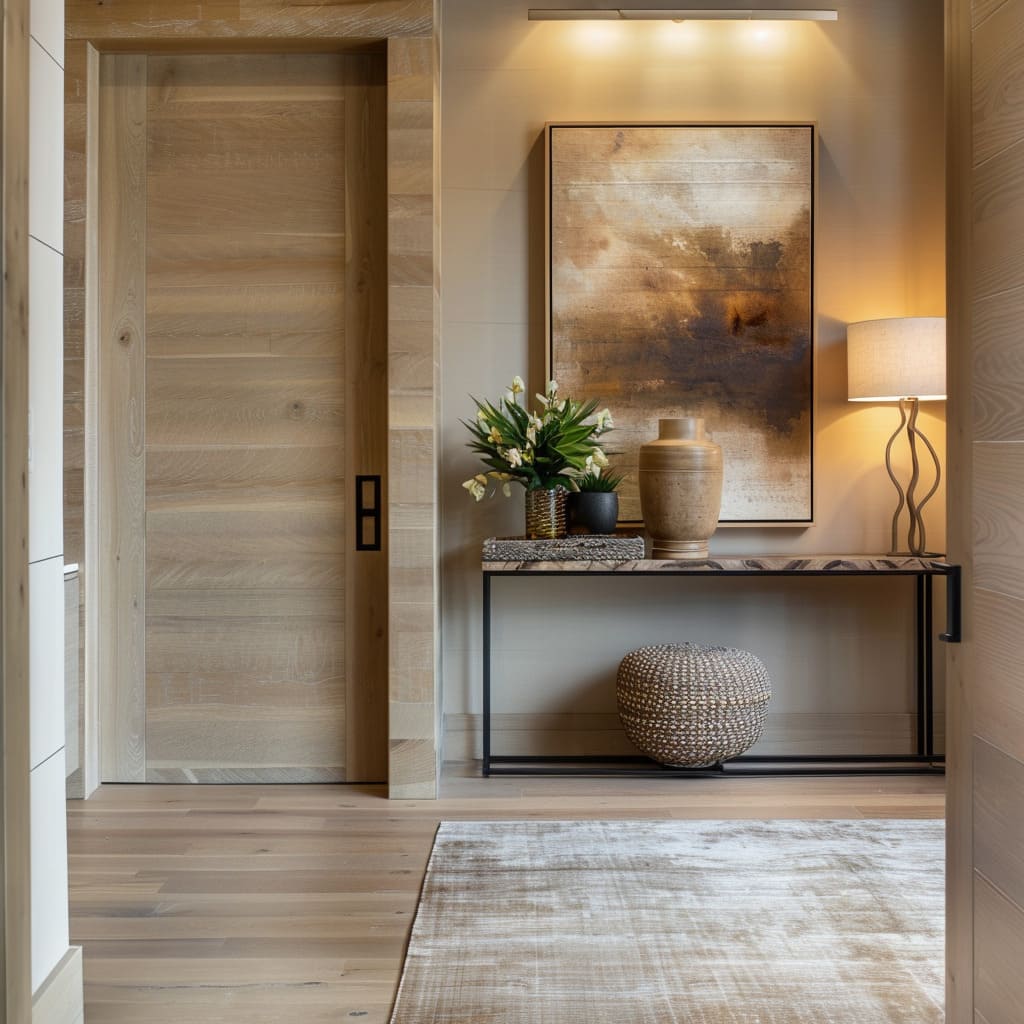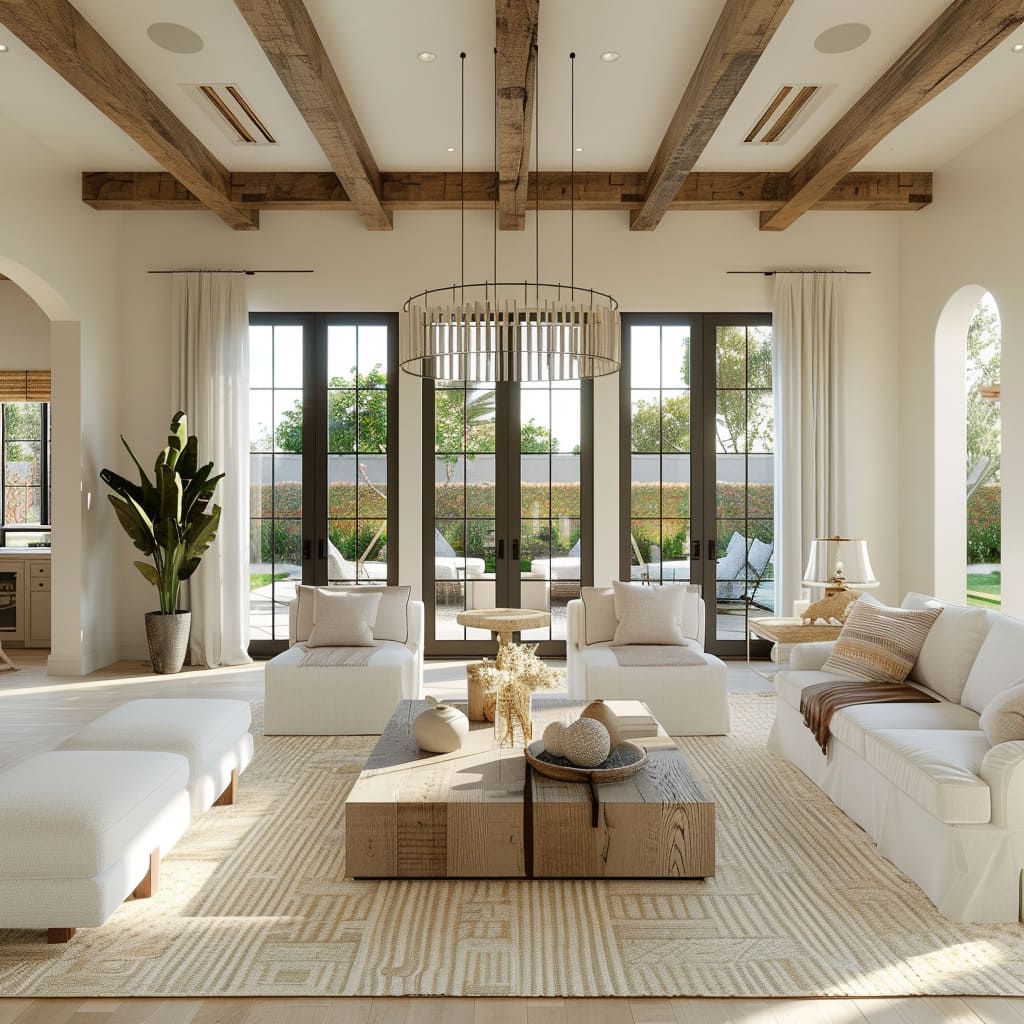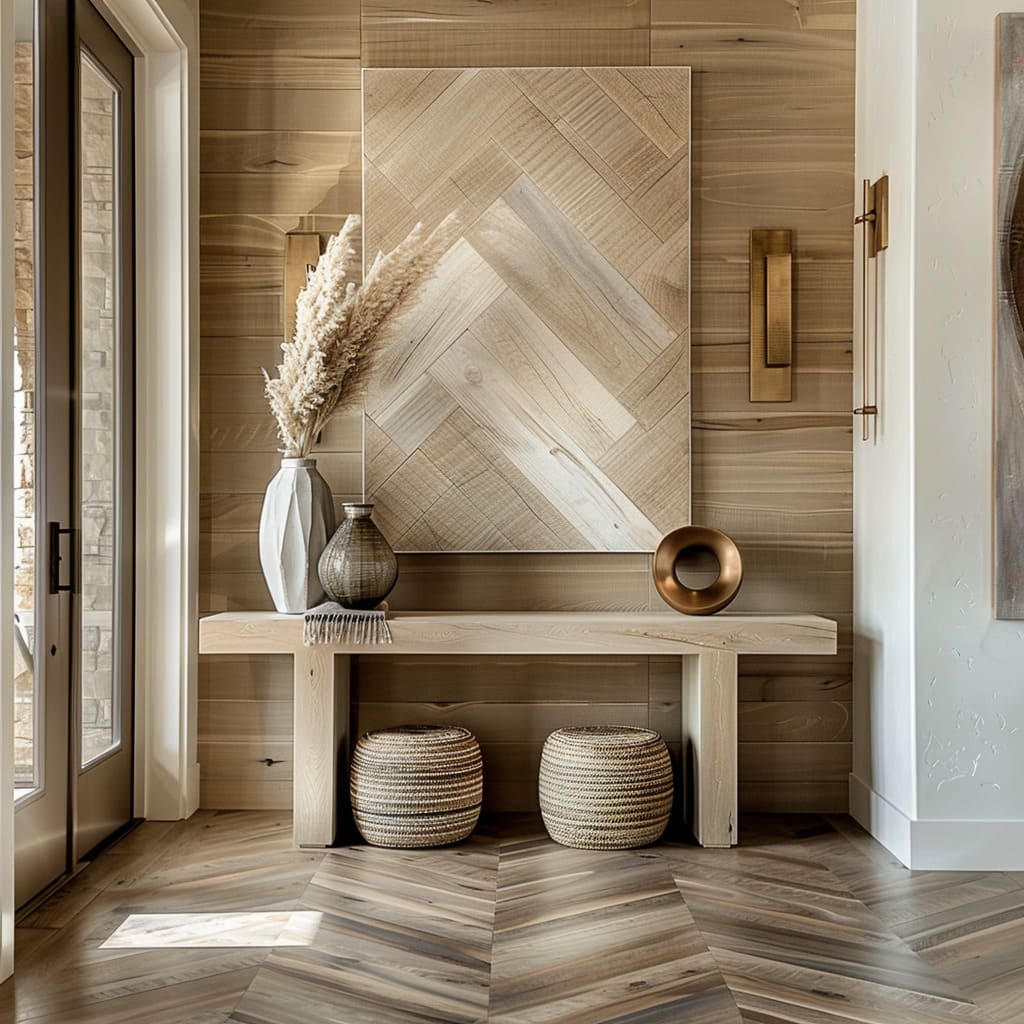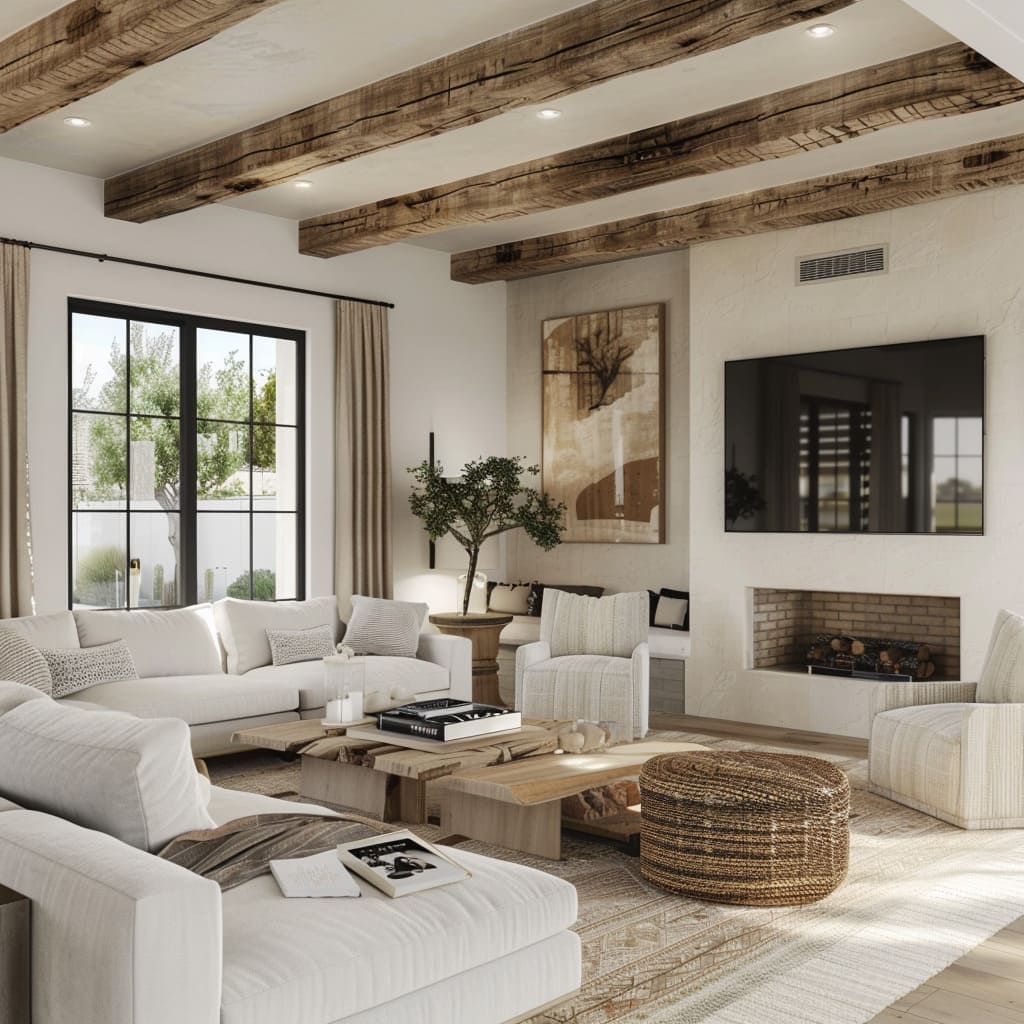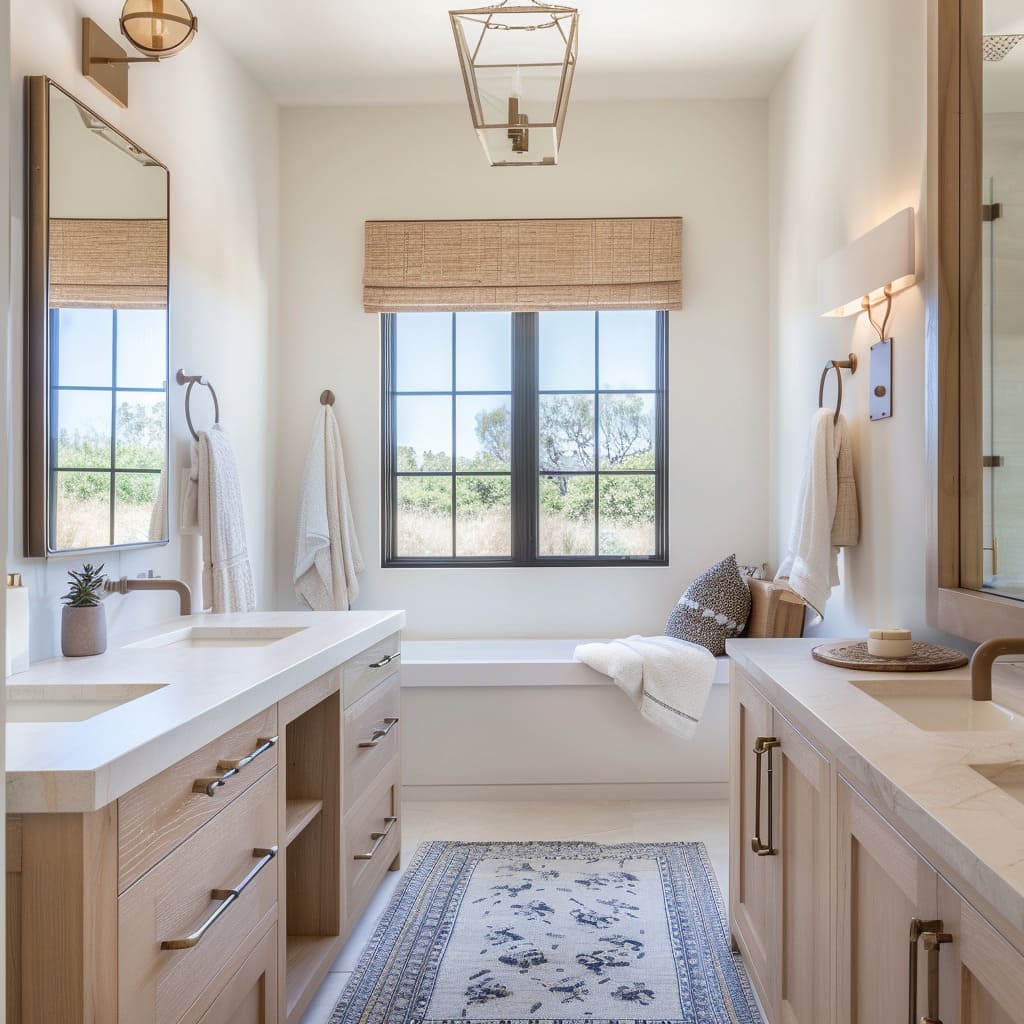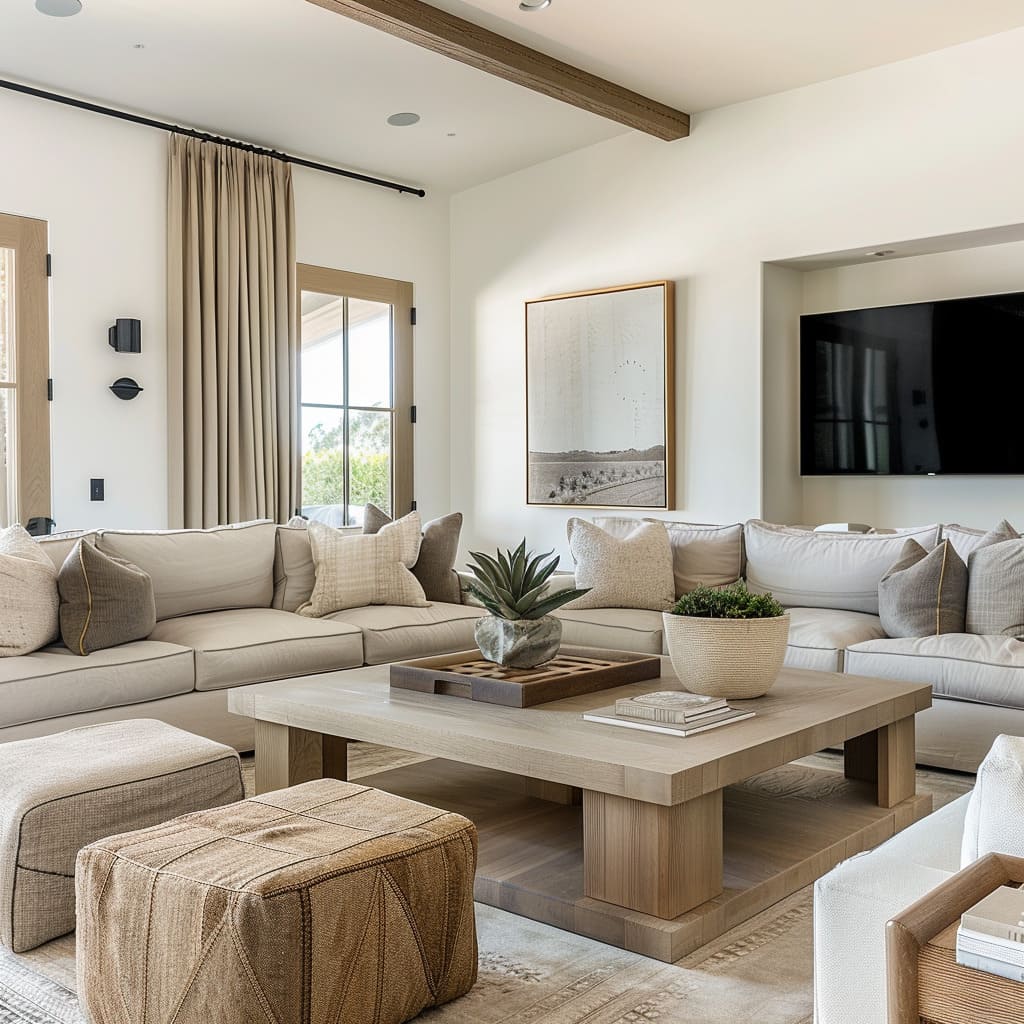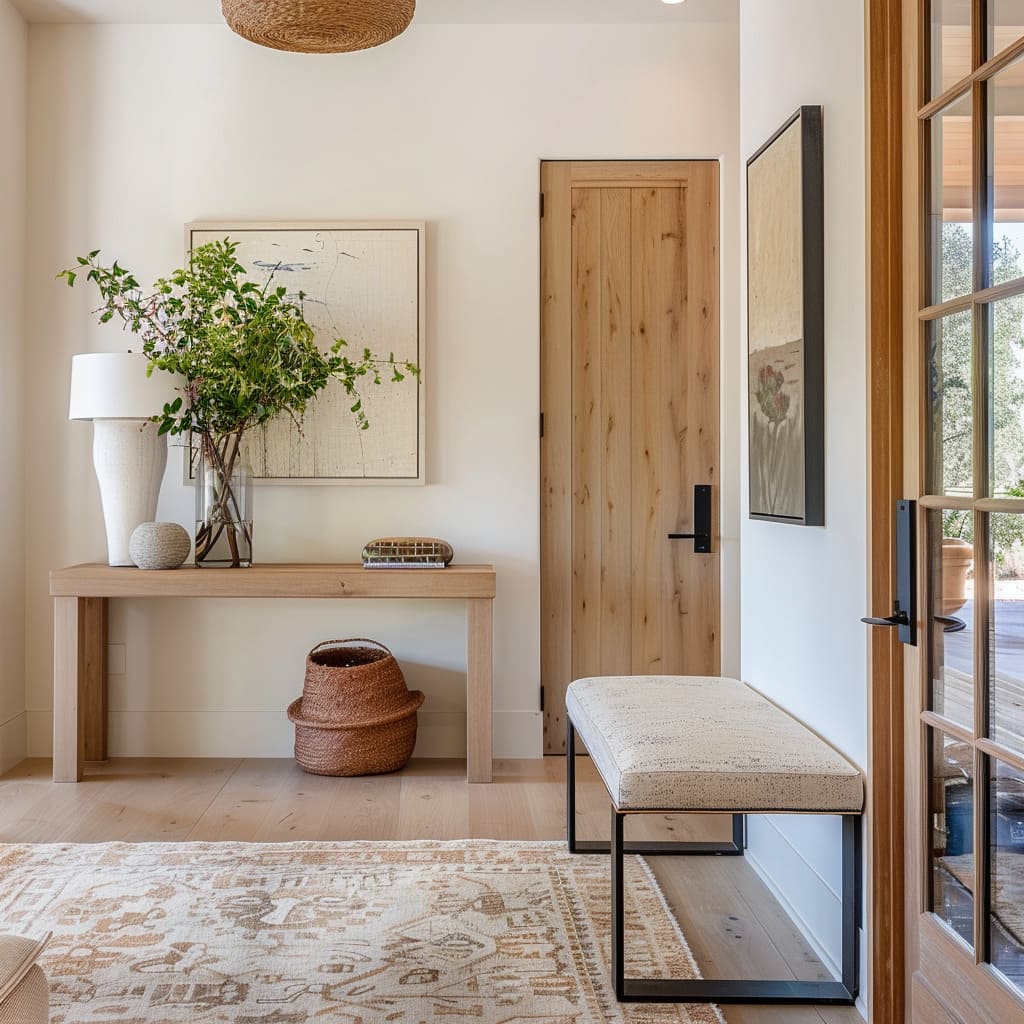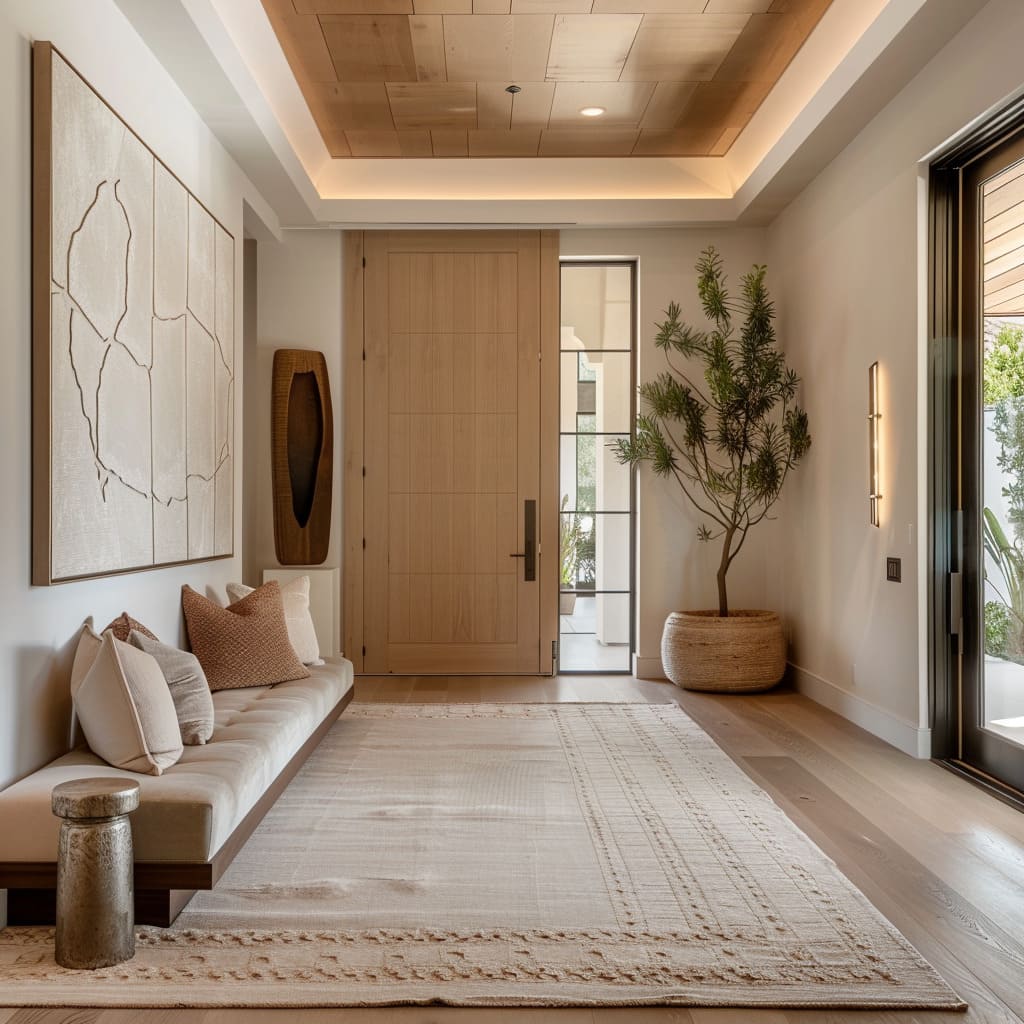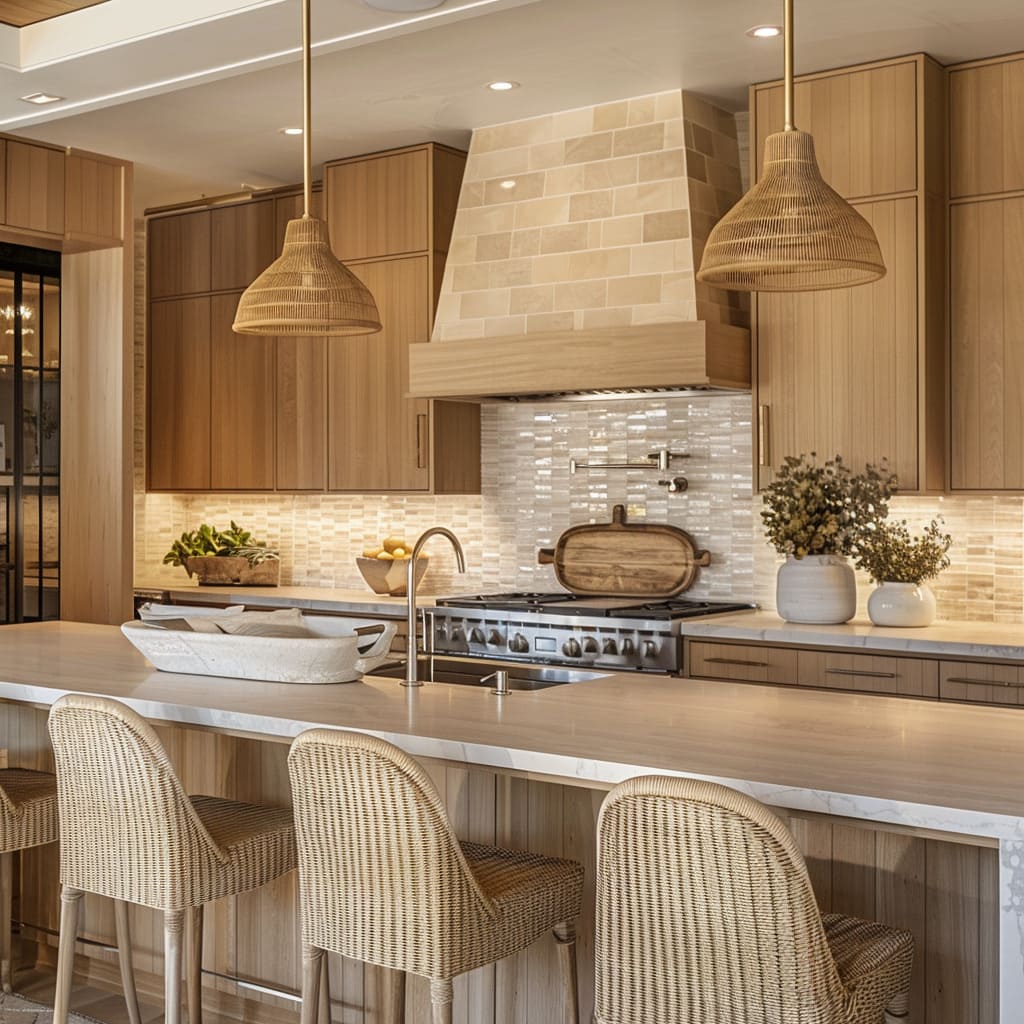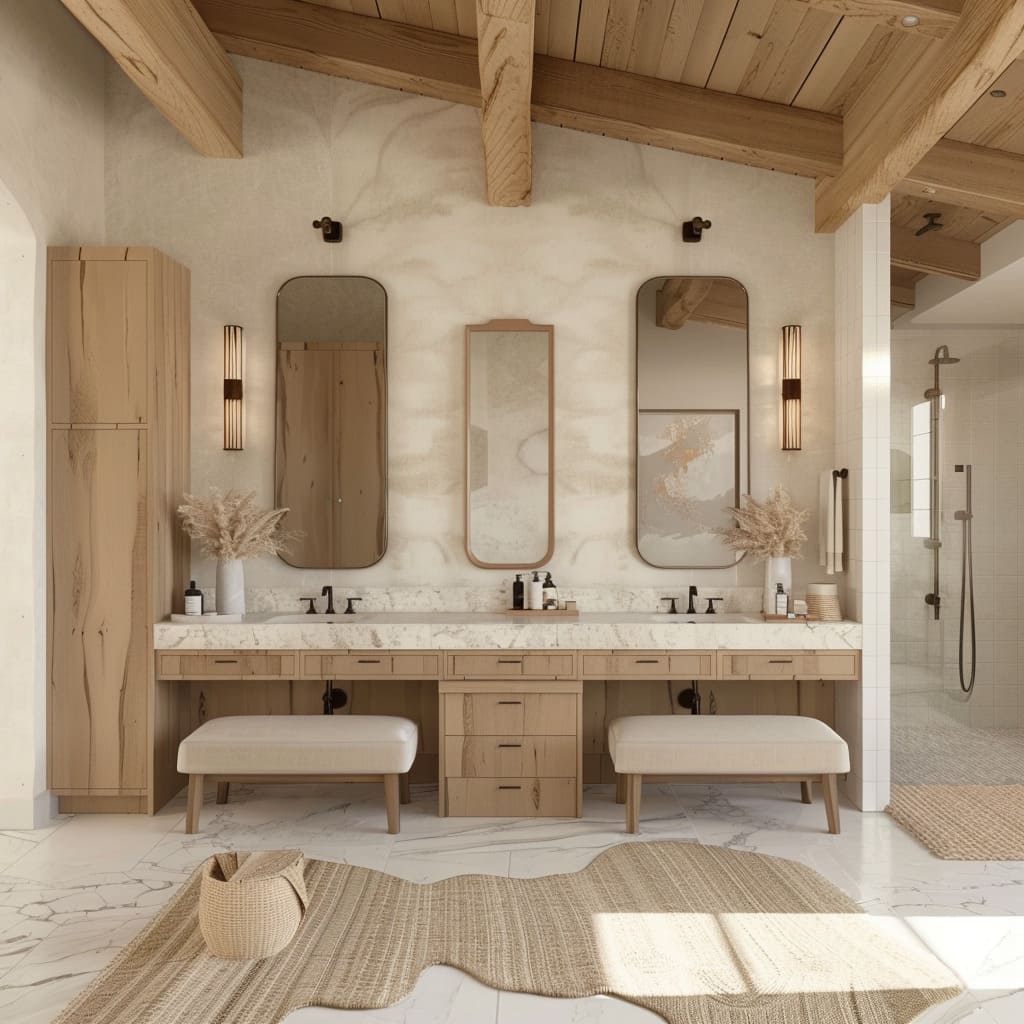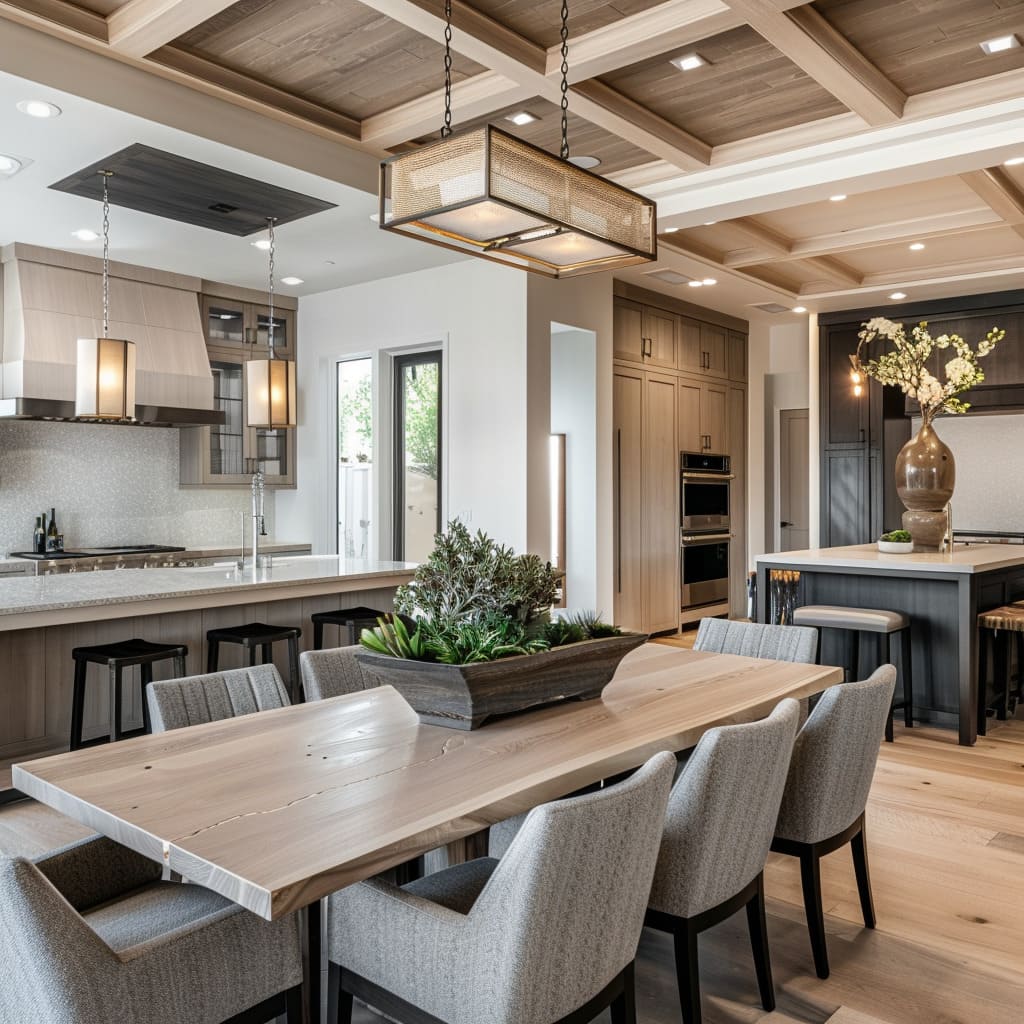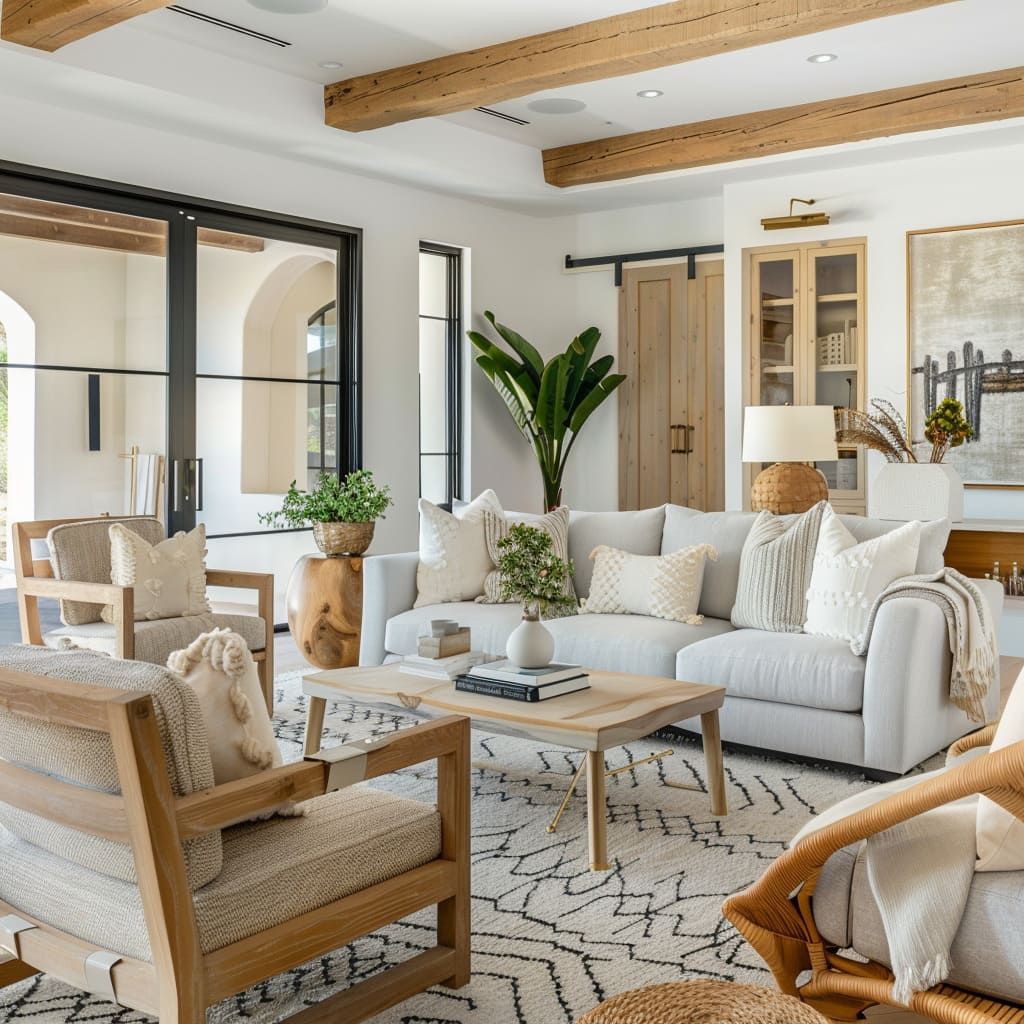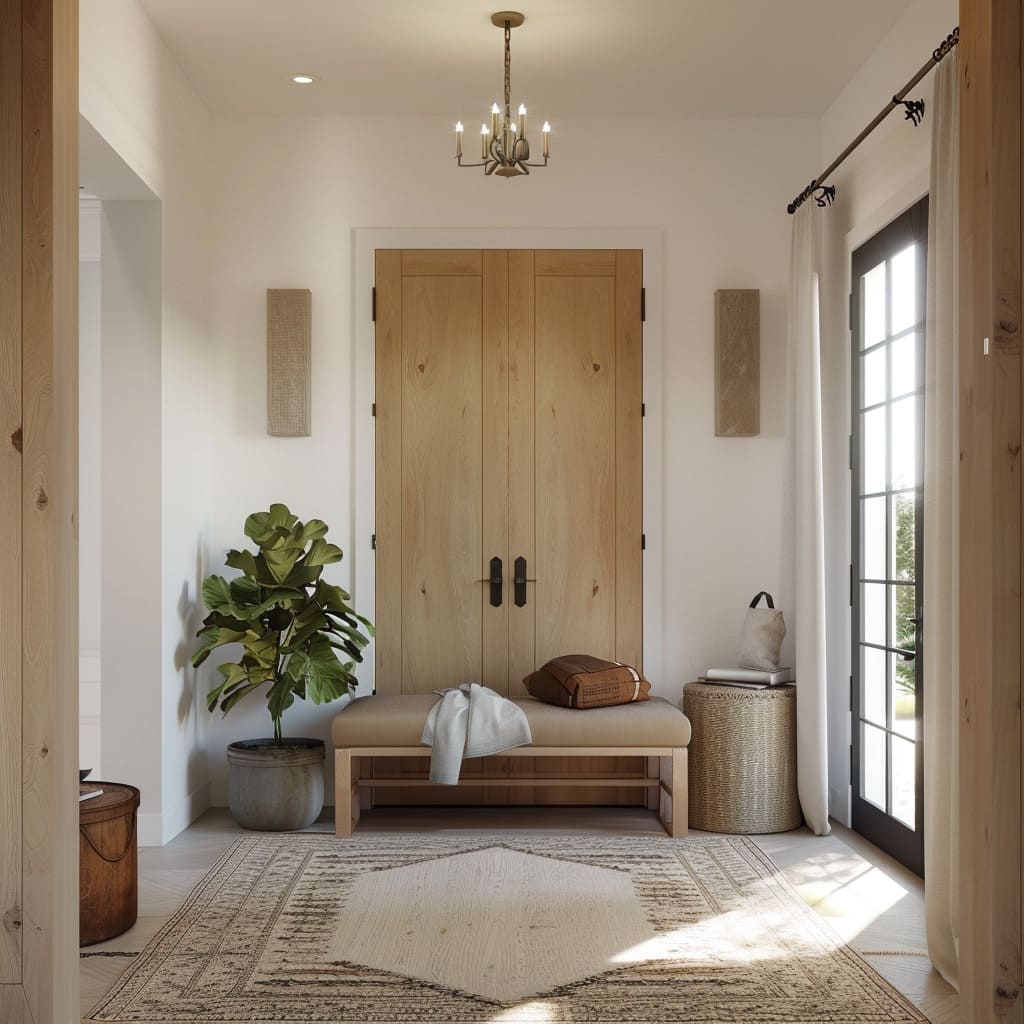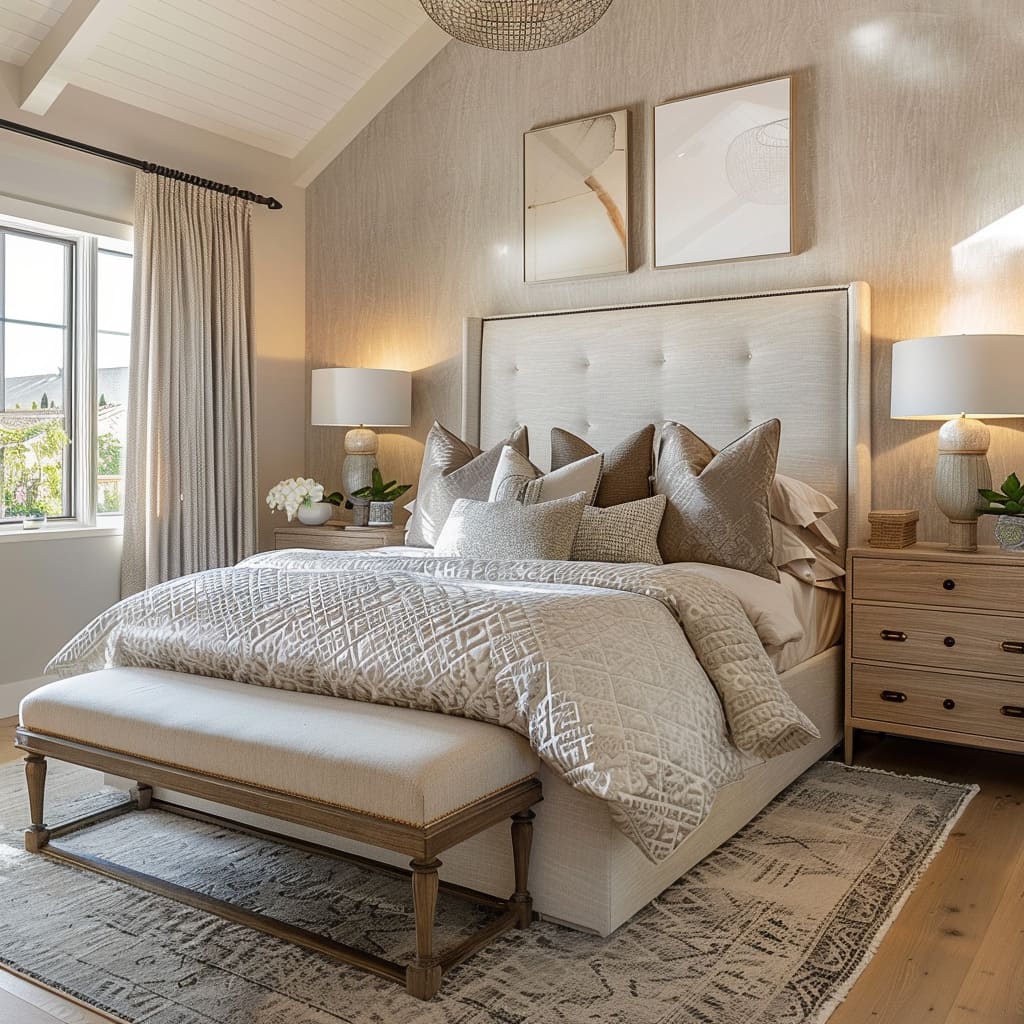Homes reflect a diverse array of design aesthetics, from ultra-modern downtown lofts to sprawling Bel Air estates that blend traditional elements with contemporary flair. This wide-ranging style spectrum influences both the demand and cost of interior design and renovations in the area.
As real estate prices continue to climb, the financial aspect of updating or redesigning a home has become more significant for homeowners. Understanding the various costs associated with interior design and renovations in this vibrant city is crucial for anyone considering such endeavors.
Comprehensive budgeting allows for better strategic planning and financial management, ensuring that the renovation process enhances the value of the home without causing undue financial strain.
By examining the financial landscape of these projects, potential renovators can set realistic expectations and prepare for the various expenses that might occur. This guide aims to break down these costs and offer insights into how to manage them effectively, providing a smoother renovation experience with fewer surprises.
This article will serve as a detailed primer for navigating the often complex pricing structures and cost variables in one of the most dynamic real estate markets in the country. Whether you’re refreshing a single room or overhauling an entire property, a clear understanding of these costs will facilitate better decision-making and help maintain control over the project’s scope and budget.
The Basics of Interior Design and Renovation
What is Interior Design?
Interior design involves creating aesthetically pleasing and functional spaces within a building. This discipline not only covers the selection of color schemes, furniture, and accessories but also the optimization of layouts to improve the flow and usability of spaces.
Interior designers often work closely with clients to capture their visions and translate them into reality, adhering to budget constraints while maximizing the visual and practical appeal of the area. In Los Angeles, the diversity of interior design styles mirrors the city’s cultural dynamism.
Popular styles range from sleek, contemporary designs characterized by clean lines and minimalist approaches to more ornate traditional designs that feature intricate woodwork and rich textures. The choice of style can significantly influence the atmosphere of a home, making it crucial to select one that aligns with the inhabitants’ lifestyles and preferences.
Overview of Home Renovation
Home renovation refers to the process of making improvements or alterations to existing structures. This can involve anything from updating a few elements in a room to completely transforming the architecture and interior design of a home.
The primary goal is often to increase the property’s value, improve functionality, or enhance the aesthetic appeal to suit the owner’s changing needs or tastes. In the context of the United States, and Los Angeles in particular, the most common types of renovations include kitchen and bathroom remodels, which offer substantial returns on investment due to their critical roles in daily life.
Whole-house renovations are also popular, particularly in areas with older housing stocks where updates are necessary to modernize facilities or improve energy efficiency. Each type of renovation comes with its own set of considerations, such as budget, design choices, and the potential need for structural changes, all of which require careful planning and professional execution.
Factors Influencing Costs
Size and Scope of Project
The size of a project plays a critical role in determining the overall costs of interior design and renovation. Generally, the larger the space, the more materials and labor will be required, leading to higher expenses.
For instance, renovating a 3,000 square foot home will naturally incur more substantial costs than updating a compact 800 square foot apartment due to the increased quantities of paint, flooring, and fixtures required, as well as the extended labor hours needed to complete the project. Furthermore, the scope of the project—whether it is a minor update or a major overhaul—significantly affects the budget.
Minor updates might include repainting walls, replacing old fixtures, or installing new lighting, which typically do not require extensive labor or expensive materials. On the other hand, major overhauls could involve knocking down walls to create an open floor plan, upgrading large kitchens or bathrooms, and installing high-end finishes, all of which require a substantial financial commitment.
These extensive transformations may also necessitate detailed architectural plans and permits, adding to the overall costs.
It’s also important to consider that in cities like Los Angeles, where real estate values are high, the return on investment for comprehensive renovations can be significant. Homeowners often opt for more extensive upgrades in such markets, knowing that the enhancements can considerably increase the property’s market value.
When planning a renovation, homeowners should carefully evaluate how much of the space needs to be altered to meet their needs and how those changes will impact their budget. Working with a professional can help define the scope effectively, ensuring that all goals are met without unnecessary expenditures.
Accurately assessing this aspect of a renovation project helps in creating a balanced budget that aligns with the homeowner’s financial capabilities and project ambitions, ensuring that the renovations enhance the home’s value and functionality.
Materials and Finishes
Selecting the right materials and finishes is pivotal in setting both the appearance and the cost of any renovation project. Choices range widely from luxurious marble countertops to more budget-conscious laminate surfaces, and each option carries its own price tag and aesthetic impact.
For flooring, hardwood offers timeless appeal and durability but can be costly, especially if opting for exotic woods. Hardwood flooring can range from $8 to $15 per square foot, depending on the type of wood and complexity of the installation.
Alternatives like vinyl or laminate flooring provide a cost-effective yet attractive solution that mimics the look of real wood without the high expense, typically costing between $2 and $7 per square foot.
Countertops also significantly affect both budget and design. Granite and quartz are popular choices for their durability and beauty but can be on the higher end of the budget spectrum, with prices ranging from $40 to $100 per square foot installed.
On the other hand, materials like laminate or ceramic tile offer considerable savings and are available in a variety of styles that can enhance the look of a kitchen or bathroom without breaking the bank; these options generally cost between $10 and $30 per square foot. Cabinetry is another area where costs can vary dramatically based on material, design, and whether the units are custom-made or pre-fabricated.
Custom cabinets are designed to fit exact specifications and preferences, which leads to higher costs but also ensures that every inch of space is utilized efficiently, often costing $500 to $1,200 per linear foot. Pre-fabricated cabinets might offer a quicker and more cost-effective solution, but the options for sizes and styles are generally more limited, which might compromise the overall design vision; these can range from $100 to $300 per linear foot.
The choice between high-end and budget-friendly options should be guided by both the intended use of the space and the homeowner’s financial plan. High-end materials are typically more durable and can enhance the property’s value, making them a worthwhile investment for areas of high usage or in properties in upscale neighborhoods.
However, budget-friendly options have greatly improved in quality and appearance, offering a way to achieve a desirable look without substantial costs. Homeowners need to balance their desire for quality and aesthetics with their financial reality, possibly mixing and matching materials to allocate funds where they will have the most impact.
Labor Costs
Labor costs are a substantial component of any renovation project and vary significantly depending on the complexity of the work and the expertise required. In Los Angeles, where the demand for skilled labor is high due to the constant flow of renovation projects, hourly rates for skilled workers such as electricians, plumbers, and carpenters can be quite steep.
The average hourly rate for skilled labor in Los Angeles typically ranges from $50 to $100. This rate can escalate depending on the specialization required; for example, licensed electricians and plumbers might charge towards the higher end of this spectrum due to the technical nature of their work and the need to adhere to local building codes and regulations.
In contrast, general laborers who perform more routine tasks may charge around $30 to $50 per hour.The decision to hire specialized contractors versus general contractors has significant cost implications. Specialized contractors are essential for tasks that require specific expertise, such as electrical wiring, plumbing installations, or complex structural modifications.
These professionals not only guarantee that the work meets the specific standards required but also ensure that it passes inspection, which is crucial in avoiding costly revisions.
General contractors, on the other hand, are typically hired to manage a project holistically, overseeing various aspects from start to finish. They may charge a total project fee, usually a percentage of the total project cost, which might range from 10% to 20% of the overall budget.
This fee includes the management of all subcontractors, procurement of materials, and the day-to-day oversight of the renovation site. While this might increase the initial cost, the benefit lies in having a single point of contact who ensures the project remains on schedule and within budget, potentially saving money in the long term by avoiding mismanagement and delays.
For homeowners in Los Angeles, understanding these labor costs and planning accordingly is critical. Obtaining multiple quotes and ensuring all contractors are properly licensed and insured can help manage these expenses effectively.
Additionally, clear communication about the scope and scale of the project can prevent misunderstandings that often lead to increased costs. This proactive approach not only helps in budget management but also in achieving the desired outcome for the renovation project.
Design Fees
When planning an interior design or renovation project in Los Angeles, understanding the fee structures of interior designers is crucial to managing the overall budget effectively. Interior designers typically offer various pricing models, including percentage of the project cost, flat fees, and hourly rates, each with its own advantages depending on the project’s size and complexity.
Percentage of Project Cost: This is a common fee structure where the designer’s compensation is a percentage of the total project cost. This rate typically ranges from 10% to 20% and can be beneficial for larger projects as it aligns the designer’s incentives with the overall success of the project.
The designer takes a more integral role in sourcing materials, managing contractors, and ensuring quality control.
Flat Fee: Some designers charge a flat fee for services rendered. This can be particularly advantageous for smaller projects with a well-defined scope where no unexpected changes are anticipated.
Flat fees provide certainty regarding costs, which helps in budgeting. For a typical room design, fees can range from $2,000 to $5,000 depending on the designer’s reputation and the project’s demands.
Hourly Rate: Charging an hourly rate is another option, where designers bill based on the actual time they spend on the project.
Hourly rates in Los Angeles vary widely, usually between $100 and $200 per hour, depending on the designer’s experience and expertise. This method is often used for consultation services or smaller projects where the time commitment is less predictable.
Negotiating Fees with Designers:
- Clarity and Scope: Be clear about the project’s scope from the start. Detailed discussions and written agreements about what the design service will entail can prevent misunderstandings and unexpected charges.
- Comparison and Contrast: Shop around and get quotes from multiple designers.
This not only gives you a sense of the going rates but also leverages competitive pricing strategies among designers.
This can ease cash flow and also ties payment to the satisfactory completion of specific stages of the project.
Understanding these fee structures and negotiating terms can lead to a more cost-effective and rewarding collaboration with an interior designer. Clear agreements, documented expectations, and a mutual understanding of the payment terms will facilitate a smoother workflow and successful project completion, reducing financial surprises and fostering a professional relationship conducive to achieving the best possible results for your renovation or design project.
Planning and Budgeting
Budget Creation
Creating a realistic budget is essential for any renovation project, especially in a market as dynamic as Los Angeles. The first step in budget creation is to clearly define the scope of the project, including all desired changes and potential upgrades.
Once the scope is established, itemize the costs associated with each element, including materials, labor, design fees, and any expected permits or fees from local authorities. It is also vital to research the current market rates for materials and labor in Los Angeles to ensure your estimates are accurate and reflective of local pricing trends.
This might involve obtaining multiple quotations from suppliers and contractors to get a broad perspective on the potential costs. Adding these figures together will provide a base estimate, but it’s important to include a buffer—typically an additional 10-20% of the total budget—to address unforeseen expenses and challenges that often arise during renovation projects.
The importance of contingency funds cannot be overstated. These funds are crucial for maintaining financial flexibility throughout the renovation process.
Without an adequate contingency, unexpected issues such as structural surprises behind walls, outdated wiring, or plumbing that doesn’t meet current standards can quickly deplete your budget and stall your project. Lastly, regularly review and adjust your budget as the project progresses.
This ongoing financial oversight ensures that expenditures align with initial projections and helps prevent overspending, ensuring that the renovation remains financially sustainable from start to finish.
Choosing the Right Professionals
Selecting the right contractor and designer is a crucial decision that can determine the success of your renovation project. Start by gathering recommendations from friends, family, or reputable trade associations.
Once you have a list of potential candidates, verify their credentials to ensure they are properly licensed and insured. This protects you legally and financially should any accidents or substandard work occur.
Interviewing each candidate is a vital step; ask about their previous projects, request to see a portfolio of their work, and discuss their approach to projects similar to yours. This helps assess their compatibility with your vision and work style.
It’s also beneficial to contact their references to gauge their reliability, communication skills, and professional conduct. Discussing and verifying insurance coverage is another critical factor.
Ensure that any contractor or designer you consider hiring carries both liability insurance and worker’s compensation. This will cover any damages that might occur to your property and protect against liability should a worker be injured on-site.
Finally, once you choose a contractor or designer, establish clear communication channels. Regular updates, either through meetings or digital communication tools, will help keep the project on track and within budget.
Clear and consistent communication will also facilitate adjustments to the project scope or budget as needed, based on professional advice and evolving project requirements. This partnership approach between the homeowner and the professionals ensures a smoother renovation process and helps achieve the desired outcome.
Case Studies
Small Scale Project
In this case study, we examine a small-scale kitchen remodel in Los Angeles, providing a detailed breakdown of costs. This project includes updates such as new countertops, cabinet refacing, and upgraded appliances, aimed at refreshing the space without a full renovation.
The table below outlines the various costs associated with these updates:
| Item | Description | Cost |
|---|---|---|
| Countertops | Quartz, 30 square feet | $2,500 |
| Cabinets | Refacing existing cabinets | $3,000 |
| Appliances | Energy-efficient range and refrigerator | $2,200 |
| Flooring | Laminate, 300 square feet | $1,500 |
| Paint | Walls and ceiling | $800 |
| Lighting | New LED fixtures | $600 |
| Plumbing | Updating fixtures | $700 |
| Design Fees | Interior designer consultation | $1,000 |
| Permits | City of Los Angeles | $500 |
| Total | Complete small kitchen update | $13,800 |
This table provides a clear visualization of the individual costs for each component of the kitchen remodel. The following details expand on the cost items:
Countertops The cost for quartz countertops is approximately $2,500, which includes material and installation for about 30 square feet.
Cabinets Refacing existing cabinets, rather than replacing them entirely, costs about $3,000.
This process involves updating the visible surfaces of the cabinets to give them a new look without the expense of complete replacement.
Appliances The project includes purchasing an energy-efficient range and refrigerator, which collectively cost $2,200. These modern appliances are designed to use less energy, which can save on utility bills over time.
Flooring Installing new laminate flooring provides a cost-effective yet attractive update, costing around $1,500 for 300 square feet.
Paint Fresh paint for walls and ceilings in the kitchen amounts to $800, revitalizing the space with a modern color palette.
Lighting New LED lighting fixtures enhance the kitchen’s functionality and aesthetic for $600.
Plumbing Updating plumbing fixtures to modern, efficient models adds $700 to the budget.
Design Fees Hiring an interior designer for consultation and project management services costs about $1,000.
Permits Necessary permits from the City of Los Angeles are estimated at $500, ensuring the remodel meets local regulations.
This case study offers a realistic look at the costs involved in a small-scale kitchen remodel in Los Angeles, providing homeowners with a comprehensive overview to help plan and budget their own projects.
Large Scale Project
This case study examines a comprehensive home renovation in Los Angeles, detailing the financial, practical, and logistical aspects involved. The project includes extensive structural changes, complete kitchen and bathroom remodels, new HVAC systems, and high-end finishes throughout the home.
Below is an HTML table that outlines the estimated costs for each major component of the renovation:
| Item | Description | Cost |
|---|---|---|
| Structural Changes | Load-bearing walls alteration, addition of rooms | $25,000 |
| Kitchen Remodel | High-end appliances, custom cabinetry, luxury countertops | $45,000 |
| Bathroom Remodel | Modern fixtures, premium tiles, luxury fittings | $20,000 per bathroom |
| HVAC System | Installation of new energy-efficient system | $15,000 |
| Flooring | Hardwood and high-quality tiles | $30,000 |
| Electrical | Complete overhaul of wiring and panel | $10,000 |
| Plumbing | Upgrade to modern standards, including new fixtures | $10,000 |
| Painting | Interior and exterior | $15,000 |
| Design Fees | Full-service interior and architectural design | $20,000 |
| Permits | Necessary city permissions for renovation work | $5,000 |
| Total | Comprehensive home renovation | $195,000 |
Challenges Faced, Solutions Implemented, and the Outcome:
Challenges Faced: During the renovation, several challenges arose, including unexpected structural issues and delays in permit approvals. Structural surprises, such as the condition of existing beams and load-bearing walls needing more extensive reinforcement than initially planned, required quick adaptation and increased the budget.
Solutions Implemented:To manage these issues, the renovation team employed a structural engineer to reassess and redesign certain aspects of the project.
This ensured all structural changes were safe and up to code. Additionally, to handle the delay in permits, the project manager prioritized interior work that could proceed without the delayed permits, optimizing the use of time and reducing downtime.
Outcome: Despite these challenges, the comprehensive renovation significantly enhanced the property’s value and aesthetic appeal.
The modernized spaces, upgraded systems, and high-quality finishes attracted positive attention in the local real estate market. The homeowner was able to enjoy a beautifully transformed living space that not only met their expectations but also adhered to the latest standards of comfort and efficiency.
Saving on Costs Without Compromising Quality
Effective cost management is crucial in ensuring that renovation projects in Los Angeles remain within budget while still achieving high-quality results. Below are practical tips on how to save money on materials and labor without compromising the quality of the project.
Saving Money on Materials:
- Seek Discounts and Sales: Keep an eye on local and online retailers for sales, especially during major holidays or the end of the season when retailers are looking to clear out inventory. Sometimes, discounts of 20% to 50% off can be secured on high-quality materials.
- Consider Wholesale Options: Purchasing materials directly from wholesalers can result in substantial savings.
Wholesalers typically offer lower prices than retail because they deal in bulk quantities. This is particularly effective for standard materials like drywall, lumber, flooring, and tiles, where savings can range from 10% to 30% compared to retail prices.
For example, reclaimed wood can be a cost-effective alternative to new hardwood and adds unique character to the space. Savings here can be variable, but in some cases, you might save up to 50% compared to new materials.
For example, opting for a quartz countertop instead of marble can save money while still providing a durable and aesthetically pleasing surface.
DIY vs. Professional Help:
- Assess Your Skills Realistically: Before deciding to handle aspects of the renovation yourself, realistically assess your skills and the time commitment required.
Simple tasks like painting, installing simple fixtures, or even some basic tiling could be done DIY and save labor costs which typically range from $50 to $100 per hour in Los Angeles.
The lack of such guarantees in DIY projects could result in higher costs down the line if repairs are needed.
By employing these cost-saving strategies, homeowners can effectively reduce expenses without cutting corners on the quality of their renovation projects. The key is to plan meticulously, shop wisely, and know when to enlist the help of professionals to ensure the project’s success.
Technological Solutions
Incorporating technology into the planning and execution of home renovation projects can significantly enhance efficiency, accuracy, and cost-effectiveness. Utilizing advanced design software and mobile applications not only aids in visualization but can also streamline the entire renovation process.
Here, we explore how these technological tools can be employed to reduce costs and improve project outcomes.
Use of Design Software and Apps for Planning and Visualization:
1. 3D Modeling Software: Software like SketchUp or Autodesk Revit allows homeowners and designers to create detailed 3D models of the renovation plan.
These tools provide a realistic visualization of the finished project, which helps in making informed decisions about space utilization, materials, and styling before committing resources. Prices for these software programs can vary, with professional versions ranging from $300 to over $2,000 annually, but they often offer a return on investment by reducing costly design errors.
2.
Virtual Reality (VR): VR technology can take 3D modeling a step further by placing users inside virtual representations of their redesigned spaces, allowing them to experience the potential outcomes in a more immersive way. This can be particularly useful in deciding spatial arrangements and fixture placements.
VR setups can range from simple smartphone-based systems costing a few hundred dollars to more sophisticated setups costing several thousand.
3. Project Management Apps: Tools like Trello, Asana, or specialized construction apps like CoConstruct allow project managers and homeowners to keep track of timelines, budgets, tasks, and communication with contractors.
Most of these apps offer basic free versions with premium features available at monthly costs typically ranging from $10 to $100, depending on the level of functionality required.
4. Budget Tracking and Cost Estimation Apps: Apps such as HomeZada or Buildshop equip users with the ability to track their spending in real-time and compare it against the initial budget.
They can also provide estimations for different aspects of the project based on industry standards, helping to keep expenses under control. Subscription fees for these apps can vary, generally ranging from $50 to $200 annually, providing value by helping to avoid overruns.
How Technology Reduces Costs and Improves Outcomes:
- Enhanced Accuracy and Reduced Waste: By using 3D models and VR, designers and homeowners can precisely measure and plan the quantities of materials needed, minimizing waste due to excess purchasing and cutting. This accuracy also extends to the fit and suitability of fixtures and furniture, ensuring everything is right the first time.
- Improved Collaboration: Digital tools facilitate better communication between all parties involved in the renovation.
Changes can be made in real-time in the digital plans, ensuring everyone stays informed, which reduces the likelihood of costly misunderstandings or rework.
By integrating these technological solutions, homeowners and designers in Los Angeles can achieve more efficient, cost-effective, and successful renovation projects. The initial investment in such technologies often pays off by reducing the overall costs and improving the quality of the final product.
Conclusion
This comprehensive guide has traversed the multifaceted landscape of interior design and renovation costs in Los Angeles, providing detailed insights and practical advice to help homeowners effectively plan and budget their renovation projects. As we conclude, let’s revisit the critical points covered and offer some concluding thoughts for those preparing to undertake such endeavors.
Recap of Key Points:
- Understanding Costs: We began by breaking down the various elements that contribute to renovation costs, including labor, materials, design fees, and the size and scope of the project. Recognizing these factors is essential for creating a realistic budget.
- Choosing Materials: We discussed how selecting the right materials can impact both the budget and the aesthetic of the project.
We compared high-end and budget-friendly options, providing approximate cost estimations to aid in financial planning.
Final Thoughts: Planning a successful renovation requires careful consideration of many variables. Homeowners in Los Angeles, or indeed anywhere in the U.S., must prioritize thorough preparation, from budgeting to material selection to professional hiring.
Equally important is the willingness to adapt to unforeseen challenges and expenses, which are common in any substantial renovation.
Approaching your project with a clear understanding of costs and a commitment to quality can ensure that your renovation not only meets but exceeds your expectations, ultimately enhancing your living space and increasing your property’s value. As this guide demonstrates, the keys to a successful renovation are careful planning, informed decision-making, and strategic execution.
By embracing these principles, homeowners can confidently navigate the complexities of renovating and enjoy the process of transforming their homes.


